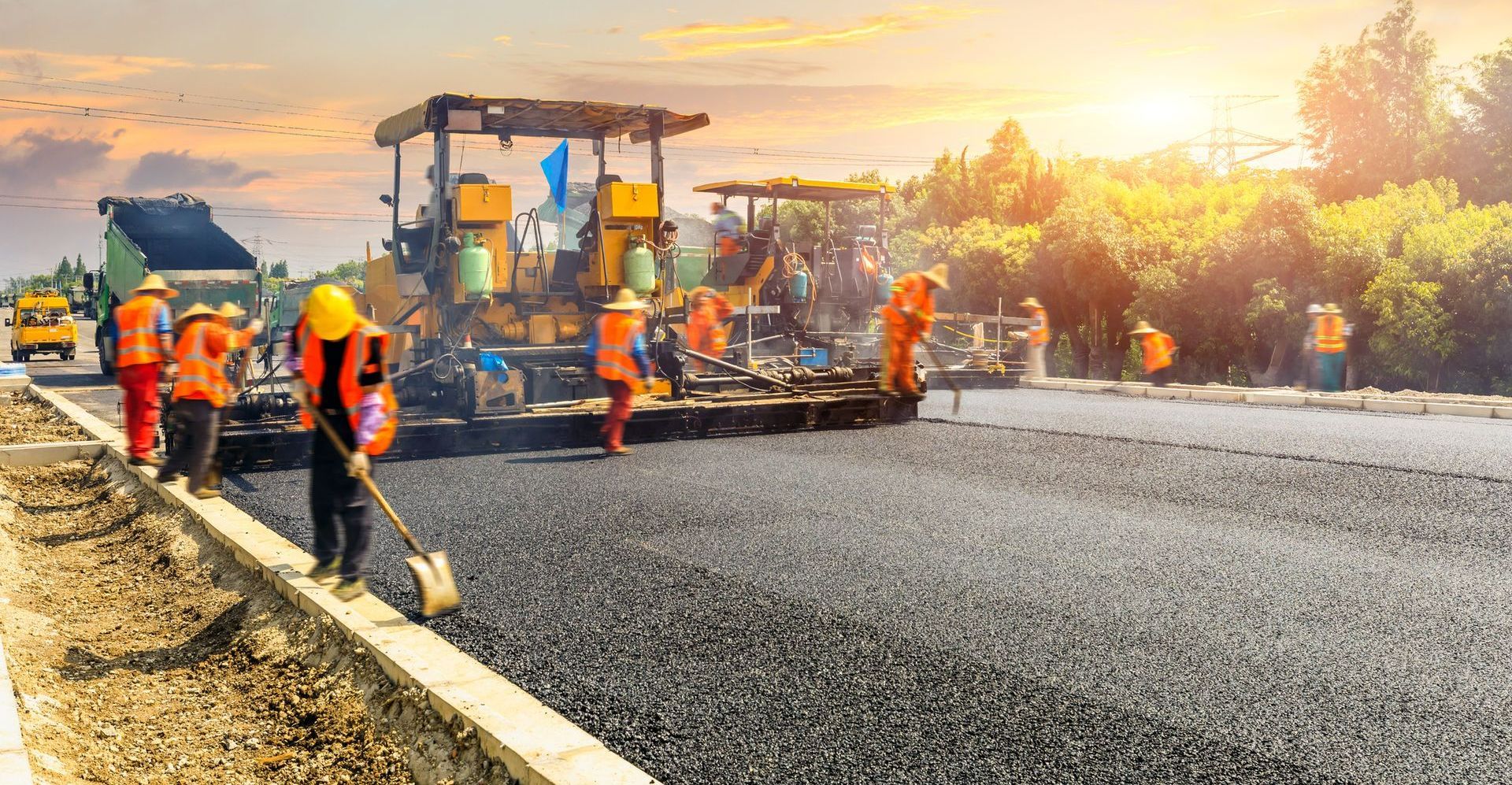"Navigating the Road to Excellence: The Art and Science of Asphalt Paving"
New Paragraph
New Title

Asphalt paving is not just about laying down a smooth, black surface on roads; it's an intricate process that combines engineering precision, material science, and skilled craftsmanship. In this blog, we'll take a closer look at the fascinating world of asphalt paving, exploring its key components, the construction process, and the crucial role it plays in creating durable and reliable roadways.
The Foundation: Understanding Asphalt
At its core, asphalt is a versatile and cost-effective material that serves as the backbone of modern road construction. Derived from crude oil, asphalt undergoes a refining process to produce the binder that holds together the various aggregates in the pavement mix. This binder, commonly known as bitumen, provides the necessary adhesive properties and flexibility to withstand the dynamic forces exerted by traffic and the elements.
The Recipe for Success: Asphalt Mix Design
Creating the ideal asphalt mix is a delicate balance of selecting the right aggregates and proportions to achieve the desired performance characteristics. Engineers carefully design the mix to consider factors such as traffic volume, climate, and soil conditions. The aggregate composition and gradation play a crucial role in determining the pavement's strength, durability, and resistance to cracking and rutting.
The Paving Process: A Symphony of Precision
Asphalt paving involves a series of meticulously planned steps to ensure a smooth and durable road surface. The process typically includes:
- Site Preparation:
- Before asphalt can be laid, the existing surface must be properly prepared. This involves removing any debris, grading the surface, and addressing any underlying issues like potholes or cracks.
- Base Installation:
- A stable and well-compacted base is essential for the longevity of the pavement. The base provides a solid foundation for the asphalt layer, distributing the load and preventing premature wear.
- Asphalt Mix Delivery:
- Hot-mix asphalt is transported to the construction site in specialized trucks. The temperature of the mix is critical, as it must be sufficiently hot to ensure proper compaction and adhesion.
- Paving and Compaction:
- The asphalt mix is laid using pavers, which distribute the material evenly across the road surface. Following closely behind, compactors compress the mix to eliminate air voids and achieve the desired density.
- Surface Finishing:
- The final step involves ensuring a smooth and even surface. This may include additional compaction, the use of a finisher to provide a uniform texture, and the application of a tack coat to enhance bonding between layers.
The Art of Maintenance: Preserving the Road's Lifespan
Proper maintenance is crucial for extending the life of asphalt pavements. Regular inspections, crack sealing, and timely repairs help prevent minor issues from escalating into major problems. Routine maintenance not only preserves the road's structural integrity but also enhances safety for motorists.
Conclusion:
Asphalt paving is a remarkable blend of science and artistry, where engineers, construction crews, and materials converge to create the vital network of roads we rely on daily. Understanding the intricacies of asphalt mix design, construction processes, and maintenance practices illuminates the importance of this essential infrastructure element in our modern society. The next time you drive on a smooth, well-maintained road, take a moment to appreciate the expertise and precision that went into creating it, all thanks to the fascinating world of asphalt paving.











